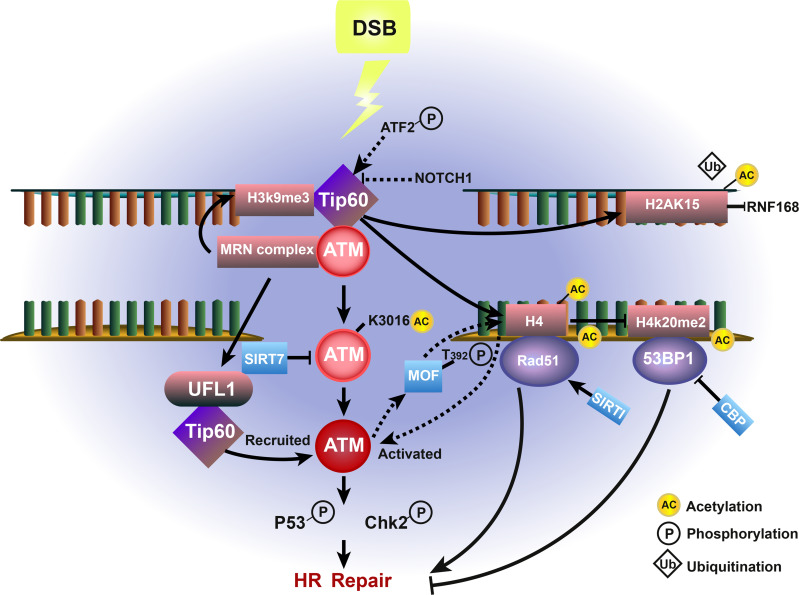Figure 2.
Effect of Tip60-ATM-associated acetylation and deacetylation on HR repair in cancer. Upon DSB damage, ATM is acetylated and activated by Tip60 at Lys-3016 and deacetylated by Sirtuin 7 (SIRT7), which promotes the ATM-dependent phosphorylation of p53 and Chk2, thereby enhancing HR repair. The MRN complex-dependent accumulation of UFL1 also promotes ATM activation by recruiting Tip60. H3K9me3 interacts with and activates Tip60 to further activate ATM. In addition, Tip60-mediated histone H4 acetylation prevents the interaction between H4K20me2 and 53BP1, while acetylation by CBP further inhibits HR repair. The Tip60-mediated interaction between H4-Ac and Rad51, which is deacetylated by SIRT1, promotes HR repair. The Tip60-catalyzed acetylation of H2AK15 also inhibit its ubiquitination. MOF-mediated H4 hyperacetylation is essential for the activation of ATM, which conversely phosphorylates MOF at T392.

